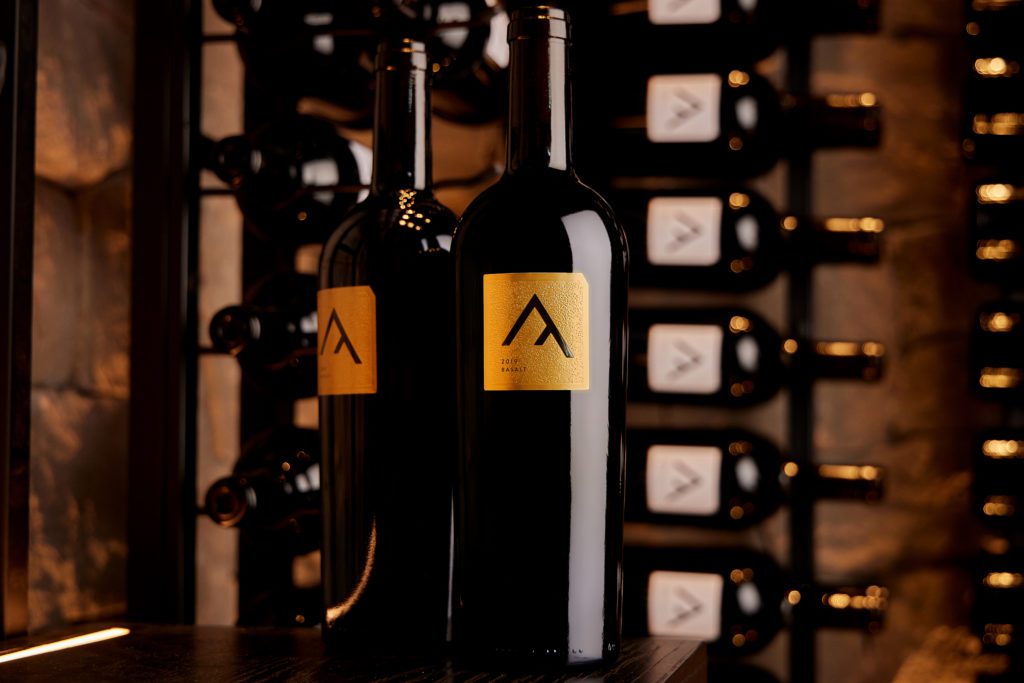Behind the Bottle #3 | Seven Apart Basalt
Award-winning Napa Valley winemaker Andy Erickson takes you Behind the Bottle to introduce the dark and broody Seven Apart Basalt Cabernet Sauvignon. The latest Seven Apart Basalt vintage 2018 is now available on allocation only.

Like red and green, our Seven Apart Basalt Cabernet Sauvignon is a complementary counterpoint to our Seven Apart Shale Cabernet Sauvignon. While both wines are made from the same varietal grown in our Stags Ridge vineyard up on Atlas Peak, they are worlds apart in style. Where Seven Apart Shale displays softness and feminine elegance, Seven Apart Basalt displays an outward strength, structure, and masculinity. In the third of our four-part journal series, Andy goes behind the bottle of each wine to share the full story. Whether you’re new to Seven Apart or a devoted aficionado, here’s everything you’ve ever wanted to know about Seven Apart Basalt.
Behind the Name
Basalt [noun]
Meaning: ‘A dark-colored, fine-grained, volcanic rock that is the most common rock on Earth’s surface.’
As its name suggests, our Seven Apart Basalt Cabernet Sauvignon is named after the basalt soil in which the vines grow. Millenia ago, Atlas Peak was the site of intense volcanic activity, so it is no surprise that the region is abundant in this dark, rocky earth. Rich in calcium, iron, and magnesium, volcanic basalt is ideally suited for various forms of agriculture – most notably vineyards. According to our Seven Apart Winemaker Andy Erickson, it is this nutrient-rich, basalt-based volcanic soil (sometimes called “Jory”) that gives our Seven Apart Basalt Cabernet Sauvignon its very distinctive profile:
“The Basalt rocks themselves are dark gray, almost black, in color as they formed from cooled, hardened, and weathered lava. Volcanic soil also contains high proportions of iron that is thought to sometimes impart a welcome ashy, almost rusty taste to wines. Seven Apart Basalt encapsulates the solid, muscular frame that Cabernet Sauvignon can provide when grown in these rocky, challenging conditions,” opens Andy.
Behind the Vines
At 1,475 ft elevation, our Stags Ridge Vineyard are made up of mostly shale and basalt soil. Where shale soil is layered and softer, basalt tends to be finely grained, drains well, retains and reflects heat, and holds water. The resulting Cabernet Sauvignon is dense and tannic.
“You must remember that this earth was left untouched until 1999, when the soil was first excavated to plant grapevines. If we were to replant, we would need to bring in surface mining equipment and dynamite to break up the rock and move it. It’s pretty extreme and incredible!” explains Andy.
Seven Apart produces three Cabernet Sauvignons from the Stags Ridge vineyard – Seven Apart Shale, Seven Apart Basalt, and Seven Apart Summit.
“Cabernet Sauvignon is king around here for a reason. It will grow in many different soil types. But grown in shale and basalt, that’s where you get small berries and low yields. And that’s when the wine gets very exciting – when you have that level of concentration and aromatic expression,” Andy states.
When it is time to craft the final blend, the Cabernet Sauvignon components that show more tannin and more structure are typically designated towards the base of the Seven Apart Basalt wine.
“It’s not as if we are out in the vineyard during harvest and say ‘Oh, this part of the vineyard is the Seven Apart Basalt this year’. It’s not a linear process. Rather, we harvest the grapes, make the individual components, and then let them age for a year separately before we craft the designated blend.”
Behind the Barrel
Like its sister wine Seven Apart Shale, the 2018 Seven Apart Basalt is produced from 100% estate-grown Cabernet Sauvignon.
According to Andy, the wine is racked several times from barrel to barrel during the aging process to separate the sediment from the wine. Andy and Seven Apart Assistant Winemaker Patrick Nyeholt taste through each barrel for quality control during racking.
“I still use chalk to leave notes on the barrel to say what wine we think it should be going into. I’m very analog in that way. Then during the blending process, we sort out which barrels go into which blend,” shares Andy.
Once the desired Seven Apart Basalt blend is finalized, the wine is aged for 21 months in the finest French oak. One immediately noticeable character is the wine’s remarkable opacity and its deep black-purple hue. The depth of color suggests a wine of power and richness – an echo to its volcanic origins.
When you’re ready to pour yourself a glass of Seven Apart Basalt, prepare to have high-toned, ripe black fruit aromas fill the room. Think cassis, dry gravel, kirsch, and sage – the true essence of Cabernet Sauvignon. The palate is all power. The wine enters with a rush of fruit flavors and savory complexities, riding on a wave of tannin, which is structural but rounded and supple.
For Andy, Seven Apart Basalt is a lesson in energy and balance: the wine wields its power with a positive intention and brings joy in the process.
“Seven Apart Basalt is certainly impressive now, but it will only gain finesse and grace with time in the bottle. It will easily age for 20-25 years. Enjoy it with great food and good company,” he ends.
Join our Allocation
With only nine handcrafted barrels, the 2019 Seven Apart Basalt Cabernet Sauvignon is now sold out. Unfortunately, due to the California wildfires last year, there will be no 2020 vintage. We encourage you to join our allocation here so you can be alerted when the next Seven Apart Basalt vintage will be released. Join us on this journey as we climb the mountain, push ourselves to the limits, and craft exceptional Napa Valley Cabernet Sauvignon so that you can savor Napa at its peak.
